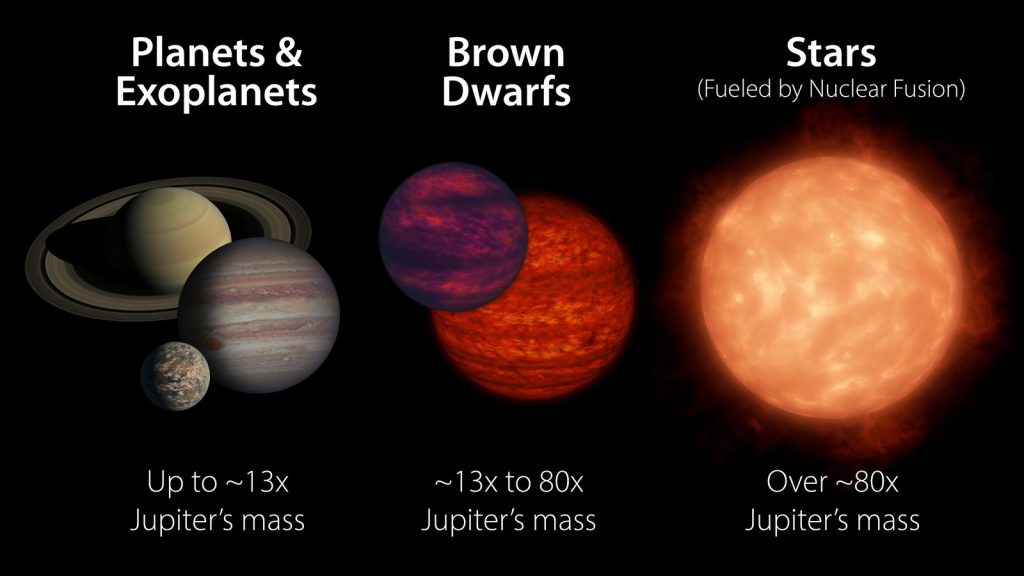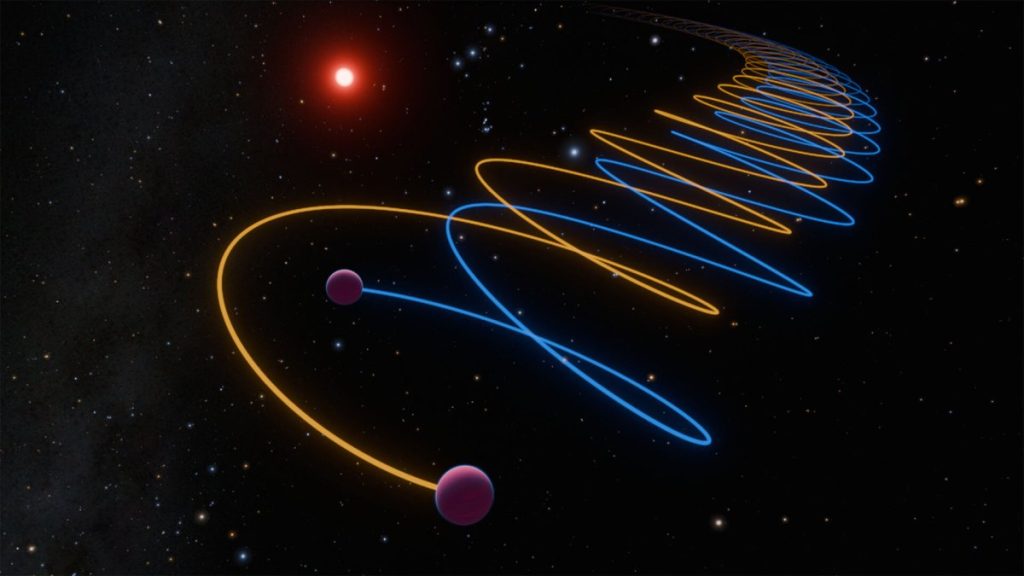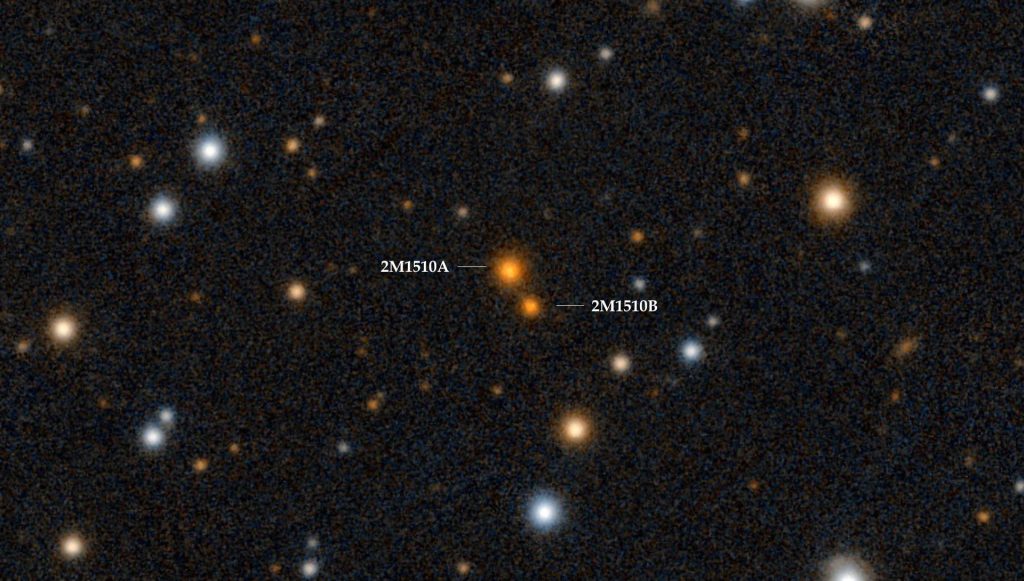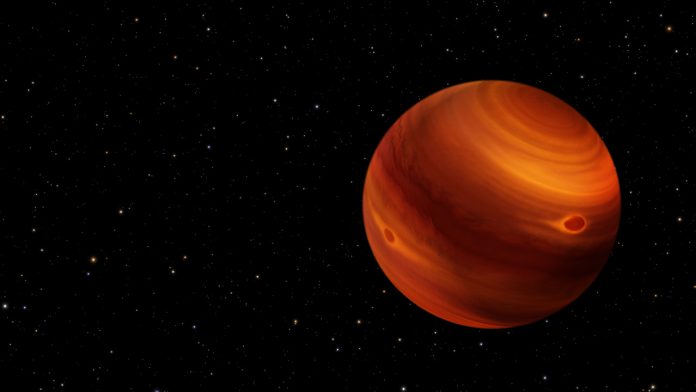In 1995, astronomers made headlines by confirming the discovery of the first-ever brown dwarf, a celestial object too small to be classified as a star but too large to be considered a planet. This brown dwarf, known as Gliese 229B, bridged the gap between planets and stars, occupying a unique niche in space. However, recent research has revealed that this discovery was only half the story. New observations have identified not one but two brown dwarfs in this system, orbiting each other in an exceptionally close binary arrangement.

The revelation came from two new studies using powerful telescopes located in Chile and Hawaii, shedding light on the true nature of Gliese 229B. Instead of being a solitary brown dwarf, it is now recognized as two distinct entities: Gliese 229Ba and Gliese 229Bb. These two brown dwarfs, gravitationally locked to each other, are part of a binary system, a common formation among stars but far rarer in brown dwarfs. The findings provide new insights into the complexities of star and planet formation.
Gliese 229Ba has a mass 38 times that of Jupiter, our solar system’s largest planet, while Gliese 229Bb has a mass 34 times greater than Jupiter. Located a relatively close 19 light-years from Earth in the constellation Lepus, these brown dwarfs orbit each other every 12 days at a distance just 16 times the separation between Earth and the Moon. Such proximity makes this pair of brown dwarfs particularly unusual; only one other known binary brown dwarf system orbits as closely.

Brown dwarfs are often described as failed stars, celestial bodies that never gathered enough mass during their formation to ignite nuclear fusion at their cores, the process that powers stars. They are still much larger than any planet, but not quite massive enough to shine like stars. “A brown dwarf fills the gap between a planet and a star,” said Sam Whitebook, a graduate student at Caltech’s division of physics, mathematics, and astronomy, and lead author of one of the recent studies published in Astrophysical Journal Letters. “They can burn deuterium, a heavy form of hydrogen, but not the common basic form of hydrogen. This means they glow dimly as they cool down, unlike most stars.”
The discovery of Gliese 229B back in 1995 was a landmark moment for astronomers. It marked the first time a brown dwarf had been confirmed, solidifying its status as a distinct type of celestial object. That same year also saw the announcement of the first exoplanet discovered beyond our solar system, making 1995 a pivotal year for astronomical breakthroughs. Yet, even after the discovery, there were puzzling anomalies surrounding Gliese 229B, particularly regarding its mass, which was measured at around 71 times the mass of Jupiter.
Such a high mass should have made Gliese 229B significantly brighter, leading scientists to question its true nature. “This didn’t make any sense, as an object of that mass would be much brighter than Gliese 229B,” said Jerry Xuan, a Caltech astronomer and lead author of a separate study on the subject published in the journal Nature. “In fact, some models predict that objects with masses above 70 Jupiter masses should fuse hydrogen and become stars, which clearly wasn’t happening here.”

New, more detailed observations have finally resolved the mystery. The research revealed that the object once thought to be a single brown dwarf is, in fact, two brown dwarfs locked in a tight orbit around each other, each smaller in diameter than Jupiter, despite their greater mass. They both orbit a red dwarf star, a common type of small, cool star with a mass about 60% that of our Sun. These findings suggest that brown dwarfs, while often thought to exist in isolation, can form in complex, unexpected configurations.
“We still don’t fully understand how brown dwarfs form or where the boundary lies between giant planets and brown dwarfs,” Xuan said. “The boundary is fuzzy, and this discovery shows us that brown dwarfs can come in surprising configurations we weren’t expecting. This highlights just how intricate and messy the star formation process can be, and it reminds us to be open to surprises in astronomy.”
In fact, the binary nature of Gliese 229Ba and Gliese 229Bb adds another layer of complexity to the study of brown dwarfs, showing that these objects can form systems as intricate as those involving regular stars. The new observations contribute to a deeper understanding of how these celestial objects fit into the broader picture of cosmic evolution, especially in the transition between planets and stars.

As astronomers continue to study these enigmatic objects, discoveries like the Gliese 229B system underscore the ongoing complexity of cosmic formation. With more advanced telescopes and observational tools, scientists hope to unravel even more of the mysteries surrounding brown dwarfs and their place in the universe. This recent breakthrough reminds us that even well-known astronomical objects can still hold secrets waiting to be uncovered.




